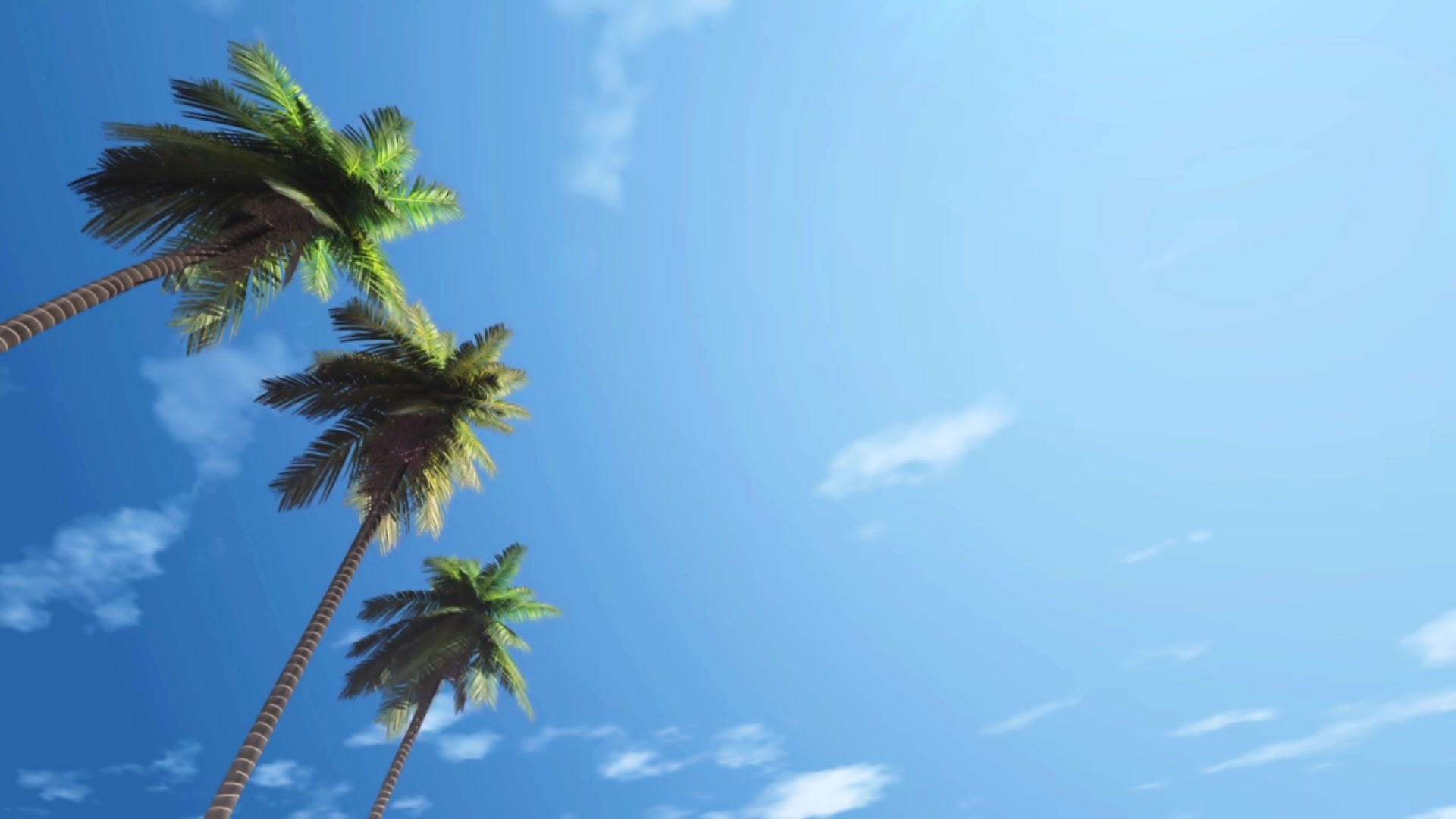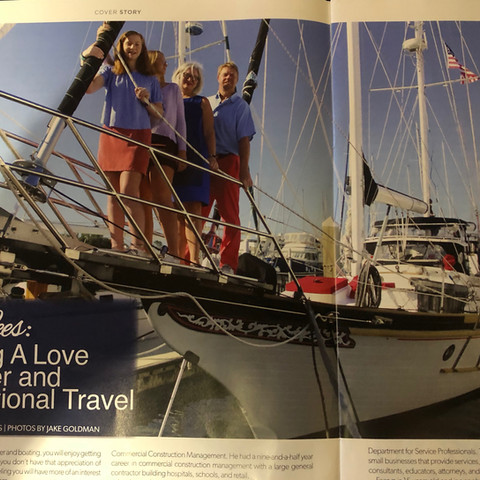- Nov 15, 2019
- 15 min read
Updated: Nov 12, 2020
Weather forecast for November 16, 2019:
Hilton Head Island, South Carolina
Low 39 high 55
North winds, 10 to 15 kts, rainy
Captain’s Log: October 06, 2019 thru November 13, 2019
The second week of October was pretty routine for us. Perfect Love's bottom was cleaned, the generator was checked out and the air conditioning units were serviced. On October 17th, our boat served as the set of a photo shoot for a local magazine called San Marcos Neighbors that was doing a feature article on Andy Lee and his family. Andy is a celebrity in the Jacksonville sailing community, an accomplished sailor who, at the age of 13, sailed around the world with his father; he is also our yacht broker. Andy was so taken with Perfect Love that he asked if the photo shoot could be done onboard.
The photographer also took several pictures of the interior of the boat that were not used for the article.
On Friday, October 18th, we headed back to Hilton Head Island and the surrounding area to once again look at property. After spending more time at the Shelter Cove Marina we booked an AirB&B in Beaufort, South Carolina, for the night. We arrived in Beaufort just after dark, had a wonderful dinner at Lady's Island Dockside, and then headed for the AirB&B, which is owned by a Captain in the United State Marine Corps. Our accommodations were nice and comfortable, we had the entire house to ourselves and we got a good night's rest before heading back to Hilton Head the next morning.
The entire day was spent looking at more condos and single-family houses. Subsequently, three days later, we made an offer on a nice little ranch house, a fixer-upper on a beautiful lot in Bluffton, less than 12 miles from Windmill Harbor Marina where we plan to keep the boat.
The annual, two-day, Jacksonville Air Show, held over the water just off of Jacksonville Beach, took place on October 26th and 27th. We attended the Show on Saturday, the 26th. It was a beautiful day and the beach was packed with enthusiasts who were not disappointed, the Navy's Blue Angels were awesome and the entire show was outstanding.
The Marina at Ortega Landing held its annual Halloween Party on the 26th as well so we had to hustled back to the boat after the Air Show to get ready for the party. The party was a real good time. An 80s-90s band provided the music and the marina guests packed the dance floor for the entire night. Shirley had a particularly good time; ask her to elaborate the next time that you communicate with her.
On October 28th, our offer to buy the house in Bluffton was accepted; we will now have a home on terra firma once again and we are very excited about living in the Hilton Head area with the boat and big water close by. Notice to all of our friends and family: we fully expect you to visit us when your travels bring you to the area; we will have spare rooms and an air mattress or two ready for you.
A week later, on November 6th, we slipped the lines at Ortega Landing and pointed our bow towards Hilton Head. Thus began one of the most challenging passages that we have yet undertaken.

The first leg of the trip, a short, 20-mile cruise from the marina to a picturesque anchorage just off of the St. Johns River, was pleasant and uneventful. While passing downtown Jacksonville we were visited by a pod of six dolphin who swam with us for several miles. While Shirley manned the camera, I continually knocked my knuckles on the side of the boat as it appeared to us that the knocking noise kept the dolphin interested in us.
The Dames Point Cut, a navigation channel for large ships constructed by the U.S. Army Corps of Engineers after World War II, provides an alternative to the river's natural course, which contains several of the sharpest turns in the river. Blount Island was created from the dredging spoils of the channel construction. Little Marsh Island, our anchorage for the evening, lies across from Blount Island on what is now called the "Old" St. Johns River. We shared the wide anchorage with one other sailing ketch. We spent a comfortable evening at anchor and were fascinated watching two enormous container ships transit the Cut on their way to the commercial cargo docks up river.
The next morning we made the short, 2-mile trip down the St. Johns River, made a hard turn to port at Sisters Creek and began our 30-mile trip up the ICW heading for Cumberland Island. We arrived at Cumberland Island at approximately 3:00pm, shortly after low tide, set our heavy Rocna anchor in 10 feet of water with 60 feet of 3/4-inch chain and settled in for the night. The weather forecast was calling for 10 to 15 knot winds out of the north with the possibility of light rain showers throughout the night.
In rough conditions while at anchor I usually spend the night on a settee in the main cabin and check our position every 45 to 60 minutes. On this particular evening our anchorage was relatively calm when it came time to hit the sack. The wind was out of the north at about 8 to 10 knots, there was no rain, the tide was running with the wind, our bow was into the wind and there was no chop on the water. Our heavy ground tackle had never failed us and I assumed that we were secured. We were exhausted and I did not check the weather forecast before retiring with my XO to the Master's Cabin, where we both fell fast asleep. We soon learned the hard way that I had made a serious, and dangerous mistake.
At approximately 4:30 a.m. we were suddenly awakened by a very loud banging noise but we couldn't determine what it was or where it was coming from. Startled and confused, we both jumped up and quickly went topside where we were confronted with total chaos. It was pitch black, the rain was pouring down, the wind was howling, the boat was being violently tossed around and we couldn't see a thing. We quickly went below; I started the engine, turned on all of the electronics and the spreader lights to illuminate the deck while Shirley grabbed our big spotlight from the forward cabin. Back on the deck Shirley immediately went forward to the bowsprit and tried to get a fix on our surroundings by panning the spotlight back and forth in a 360-degree arc; no luck, in the total darkness we had no idea of where we were.
At about this time, a loud, prolonged air horn began to blow; it was coming from a boat that was, at the time we retired for the night, anchored not far from us. From the direction of the horn's blast and the location of the boat's anchor light we could tell that we were no longer near our neighbor, but we could not make out anything else in the total darkness. One of us had dragged anchor and, by the terrifying sound and feel of things, it was us!
For what seemed to be an eternity, we were totally out of control and blind to our situation. The boat was swinging wildly and crashing up and down in the waves. The loud banging sound that had woken us up was finally identified as the anchor chain slamming against the bow sprit-mounted anchor roller as the bow dropped and then rose with the waves.
At this point Shirley took the helm while I went forward and tried the spotlight. Shirley finally saw something close to starboard and loudly called out that we were drifting toward a concrete dock. Swinging the light around, I then spotted wood, concrete and a dock cleat. Our 50,000-pound boat had dragged her 80-pound anchor and 60 feet of chain for at least 80 yards and was now less than 5 feet from banging her starboard side up against a section of the St. Mary/Cumberland Island ferry dock. As our luck would have it, this section of the dock just happened to be unoccupied by another boat and the dock itself had a heavy rubber guard running along a length that almost perfectly matched the length of our boat.
With Shirley still at the helm and trying desperately to keep us somewhat parallel to the dock, I quickly secured a heavy dock line to the starboard-side midship hawse cleat and, just as the hull made contact with the dock, I jumped onto the rocking dock where I secured the line to a dock cleat. Shirley quickly left the helm, attached a stern line to the boat and then tossed it to me. After I secured the stern line we quickly repeated the same with a bow line; we also rigged two spring lines.
The boat was no longer drifting but she was slamming against the dock. We now had to time our attempts at positioning each of our large fenders between the boat and the dock with the irregular wave action that was heaving the boat against the dock. Working very quickly and carefully, we soon had four fenders cushioning the hull from the dock.
We, and our beautiful home, were no longer in immediate danger, but we were in a real difficult situation. Now, with things marginally under control, we stood in the pouring rain and took a few minutes to try to calm down and think; our hearts were pounding and, looking back, I think that we both may have been in shock.
It was approximately 6:00am and, with the dim morning light just barely illuminating our surroundings, we were finally able to take in the entire scene. It was frightening. Out of the north, near-gale-force winds were blowing straight down the long fetch of Cumberland Sound and against the incoming tide, creating 4ft white caps that were pushing our boat against the dock. With each breaking wave the floating dock heaved up, down and sideways, constantly banging against its concrete pilings, with Perfect Love mimicking the motion of the dock. Our anchor appeared to have come to rest about 40 feet off of the aft quarter. The anchor chain was rigid, coming off of the bowsprit-mounted anchor roller at a 30 degree angle down and towards the rear of the boat on the port side. Our dinghy, still hanging from the davits, was precariously close to a concrete dock piling, but was not yet hitting it. Oddly, a quick survey of the starboard side of the hull revealed no damage.
Our adrenaline was pumping hard; we each had numerous but minor bumps, bruises and cuts; we stood in the rain and wind and marveled at our "good fortune". If the boat had drifted 20 feet farther to the north she would have been driven past the dock, spun around, beached, pushed onto her side and then taken on water; if she had drifted 40 feet farther to the south she would have missed the fixed dock and slammed into a series of large wooden pilings, spaced about 10 feet apart, and been beaten to pieces. We were incredibly lucky to have come against the dock the way that we did; we had absolutely no damage, not even a small scratch on the hull paint. Our better Angels were evidently looking out for us.
Slowly a measure of composure returned to each of us and, with it, the outline of a plan emerged:
1). lower the dinghy to prevent it from getting pinned against the concrete piling
2). attempt to retrieve the anchor
3). with the anchor on board, get off of the dock under power
4). motor to safer, deeper water
5). drop anchor and play out a 10-to-1 scope (140 feet of chain)
The dinghy was easily lowered into the water and tied to our stern but our multiple attempts to retrieve the anchor proved unsuccessful. The angle of the chain coming off of the bowsprit roller prevented any movement. With every attempt of our powerful windlass, the chain would jump off of the roller and wedge itself between the roller and the guard. One of us would then have to climb out to the end of the bowsprit and dislodge the chain with the bang of a hammer while riding the waves like a bucking bronco.
I thought that by allowing the bow of the boat to swing away from the dock, thereby lessening the angle that the anchor chain was coming off of the roller, we could slowly retrieve anchor. Shirley was not so sure and felt that we should just stay put and wait the storm out. Feeling the need to do something, I went ahead and eased the line that held the bow to the dock. Working the winch foot switch, Shirley made another unsuccessful attempt to haul the anchor. We tried this approach several times and, with each unsuccessful attempt, the position of the boat relative to the dock became more precarious. We finally gave up and called TowBoatUS for assistance. We pulled the bow back towards the dock as far as we possibly could and then waited for our help to arrive. It took bout 45 minutes for TowBoatUS to reach us.
The captain was very skillful, expertly positioning his boat so that he could transfer to us the working end of a heavy tow line with a large steel carabiner connected to it. He then instructed me to clip the carabiner around the anchor chain as far down the chain towards the water as possible. Once this was accomplished, he slowly throttled up, moving away from our boat in the direction that our bow was pointing. The tow line steadily pulled on the chain, causing the carabiner to periodically jump lower down the chain and into the water. With each successive jump, the anchor would drag a foot or two towards the bow. Eventually the anchor freed itself from the muddy bottom and broke the surface of the water about 40 feet in front of our boat.
With the anchor now free Shirley jumped back onto the dock to release the lines; I took the helm. The TowBoatUS captain positioned his boat so that the tension of the tow line kept our bow against the dock. Shirley was then able to carefully release each of the lines and, freeing the midship line last, she step back onto the boat. The TowBoatUS captain then pulled us, with his tow line still connected to our anchor line, away from the dock and into deeper, safer water.
We could now retrieve the entire chain using our windlass but I stopped the windlass just before the anchor reached the bowsprit roller. The carabiner had slipped all the way down the chain and onto the shank of the anchor. Hanging over the end of the bow sprit, I reached down, unclipped the carabiner, tossed the tow line into the water and then pulled the anchor into its cradle. We moved under our own power into deeper water.
The TowBoatUS captain retrieved his tow line, pulled along side, tied a line to our boat and then filled out the necessary paperwork. We signed the papers where required, profusely thanked the captain and bid him farewell. We then motored to our desired location, properly set the anchor and put 160 feet of chain in 15 feet of water. It was now just before noon and the worst of our ordeal was over, but we were not completely out of the woods yet. It was still raining, we still had near-gale-force winds out of the north, the water was very rough and the weather forecast was ugly for the next 12 hours; we were not going anywhere soon.
After changing into dry clothes we hugged each other for a while and then congratulated ourselves. I am very grateful to have such a calm and steady hand as my ship mate; we worked extremely well together under terrible conditions. Time after time, Shirley saw what needed to be done and just did it. Over warm food and hot drinks, we discussed in great detail the actions, or lack of action, that led to this crisis. We learned some very important lessons the hard way. The crew and the boat were extremely fortunate to emerged unscathed and we thanked God for that.
As our nerves finally settled a heavy fatigue set in and we spent the remainder of the long and stormy afternoon alternating cat naps in between checking the anchor and our position relative to the shore. We did have one pleasant diversion in the late afternoon; to the south we could clearly see a sinister-looking nuclear submarine making its way up Cumberland Sound heading for the Kings Bay Naval Base, escorted by two large submarine tenders.
We both spent the long night in the salon, Shirley occupying the port settee while I stretched out on the starboard side. The high winds and rough water continued all night. A 40-minute timer was set and we took turns going on deck to check our position. With the outgoing tide running with the wind the boat rode at anchor comfortably but, by 11:30pm, the incoming tide opposed the wind and the boat swung chaotically about the anchor; it was very uncomfortable from midnight until dawn.
The weather forecast for the new day called for gradually clearing skies and diminishing winds through the morning. We had had enough of Cumberland and decided to make the 25-mile trip to Jekyll Island. Shortly after dawn we hauled anchor and headed for the ICW.
We made our way north under cloudy skies for the first few hours; the sun finally broke through around 10:00am. We passed about a dozen boats, all heading south, as we motored north. The wind was still blowing at 18 to 25 knots out of the north, with some gusts over 30, when we entered St. Andrew Sound, just south of Jekyll Island. There we were challenged with 5-to-7ft waves on our nose. With waves breaking over the bow and sea spray flying over the dodger and bimini, we powered our way into open water and Red Marker '32' (St. Andrew Sound has a shoal that runs a couple of miles out and Red 32 marks the turning point around which we had to navigate to get to Jekyll). We made the turn with less than 8ft of water under our keel. By 3:00pm on Saturday, November 9th, we were securely tied to the dock at Jekyll Harbor Marina; we were completely exhausted. After grabbing an early dinner at Zachry's Riverhouse next to the marina, we hit the sack and were asleep before sunset.
On Sunday, November 10th, we secured two marina bicycles and rode all over the island. Driftwood Beach was amazing and the view from the beach of the Golden Ray, the capsized cargo ship still lying in St. Simons Sound, was incredible.
We also rode our bikes through the historic Jekyll Island Club. The Club was founded in 1886 when members of an incorporated hunting and recreational club purchased the island for $125,000. The Club thrived through the early 20th century; its members coming from many of the world's wealthiest families, most notably the Morgans, Rockefellers and Vanderbilts. The Club closed at the end of the 1942 season due to complications from World War II. In 1947, after five years of funding a staff to keep up the lawn and cottages, the island was purchased from the Club's remaining members for $675,000 during condemnation proceedings by the state of Georgia.
On Monday morning, November 11th, rested and anxious to start moving again, we slipped the dock lines at Jekyll Harbor Marina and continued our trek north; we had 56 miles between us and our next anchorage. Under clear blue skies and light winds we squeezed under the Jekyll Island Bridge. With the beautiful Sidney Lanier Bridge hanging gossamer-like in the west, we made our way across St. Simons Sound, passing an incoming cargo ship and the wreck of the Golden Ray. Shirley soon disappeared below deck and got lost in her work while I was left alone at the helm to enjoy the scenery slowly passing by.
The cruise was uneventful and relaxing; we arrived at our anchorage on the Newport River near St. Catherine's Island just before 5:00pm and were treated to a stunningly beautiful sunset. The stars were ablaze; there was not another human in sight.
The weather forecast for Tuesday, November 12th, called for clear and calm conditions until late afternoon, after which rain and very cold winds increasing to 20-25 knots would move in; the first freeze warning of the winter was issued for the morning of the 13th. We had 49 miles to cover before reaching downtown Savannah and the forecast for the next few days was not good. If we started at daybreak and the forecast held, we should be in Savannah before the weather deteriorated.
Our first challenge, about 17 miles up the ICW, was the infamous 'Hell Gate'. This short but troublesome channel across Ossabaw Sound is a notorious spot for groundings and, with a 6ft draft, we were a bit anxious about crossing it at anything other than high tide. We approached the channel at 90 minutes past high tide and saw nothing less than 8ft of water all the way through. So much for Hell Gate; on to Savannah.
We reached the Savannah River at approximately 3:30pm, so did the rain and the wind. The slow 6-mile trip up river to the city was made under miserable conditions with the temperature dropping quickly. There was not another boat on the water.
Approaching the River Street Market Dock we were confronted with yet another challenge: we had to squeeze our boat, measuring 58'2" overall, into an 75' open space between a $75,000,000 yacht and a $120,000,000 yacht. We made it, just barely, missing the $75Mm floating palace to our stern by about 2 inches (the captain was on the fore deck watching closely as we slip past).
Once secured to the dock, the shore power was quickly connected and the heaters were cranked up. Time to warm up, tidy up the boat and get ready for drinks and dinner with our Savannah friends Jeff, Elana, Sam and Mark.
We met at Elana and Sam's place, a beautiful 18th-century house on East Bay Street, almost directly across the street from our dock. After drinks, they wanted to see the boat so we walked back to the dock for a quick tour before heading out for dinner. It being a week night, Shirley and all of our friends had to work the next morning so it was an early night. After stimulating conversation and a delicious meal we were back on board by 9:00pm.
On Wednesday morning, November 13th, under a cold, crystal clear blue sky, we left downtown Savannah and headed for Hilton Head Island and Shelter Cove Marina. At approximately 1:00pm we entered what will become our new home waters. Our most challenging passage to date came to a gratifying end as we crossed Calibogue Sound, headed north on Broad Creek and tied up to slip I-12 at Shelter Cove.
Until next time, may your tomorrow bring fair winds and following seas.

















































































































































































































































































































































